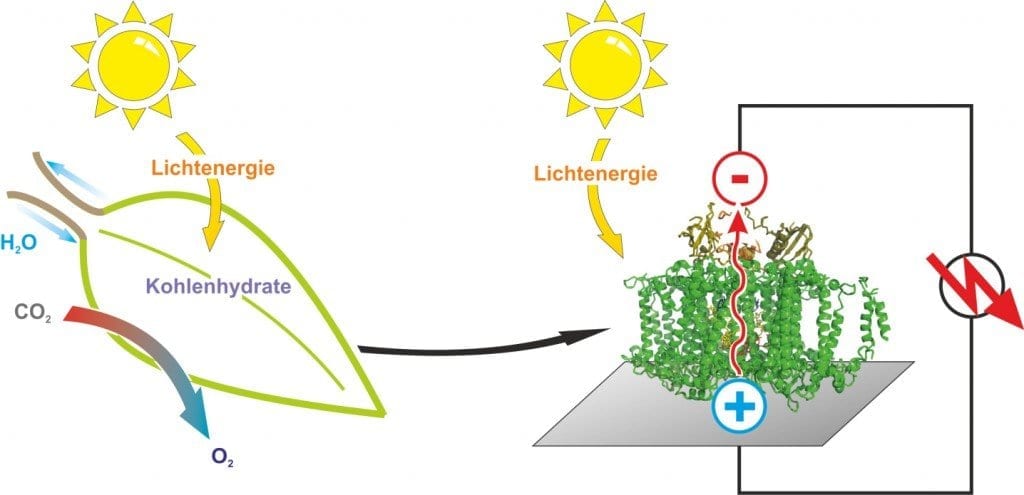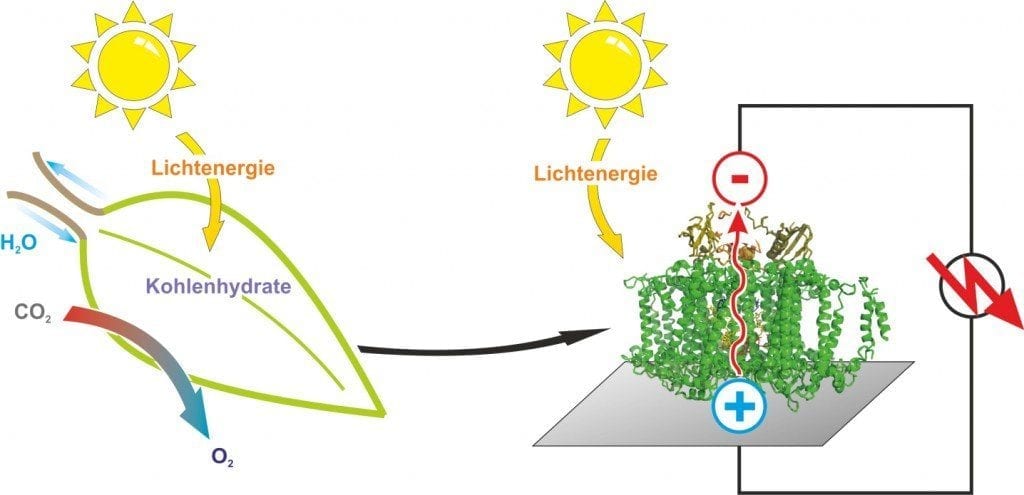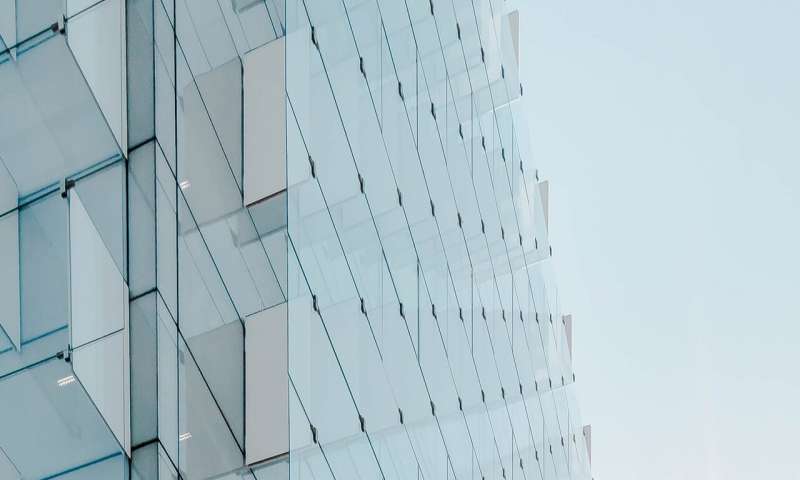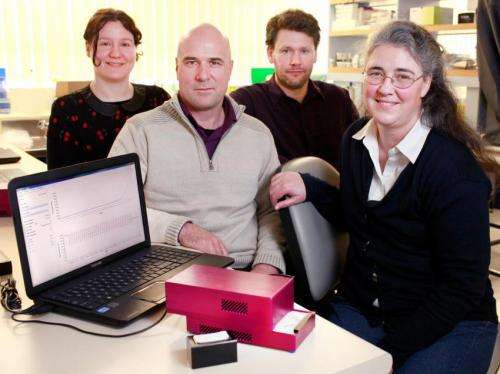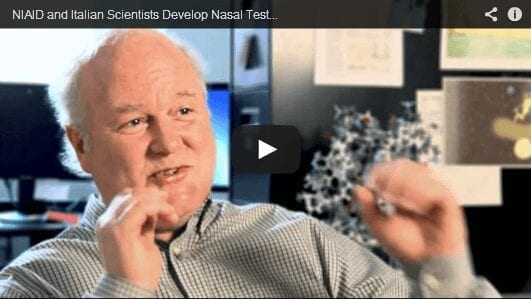Photosystem 1, a robust and efficient light harvesting protein
In leaves, photosystem 1 (PS1) absorbs light and its energy is finally utilized for the conversion of carbon dioxide to biomass. Photovoltaic devices, mostly build from silicon based semiconductors, also harness solar light but produce electricity. One approach for the development of cheaper and renewable photovoltaics consists in replacing the semi-conductor with the isolated membrane protein complexes of photosynthesis. Prof. Dr. Matthias Rögner’s team isolates a highly stable PS1 from thermophilic cyanobacteria that live in a hot spring in Japan. However, the integration of this natural component into artificial devices faces one major challenge. PS1 displays both hydrophilic and hydrophobic domains which complicate its immobilization on electrodes.
Stimuli responsive redox hydrogels as artificial matrix for photosystem 1
Dr. Nicolas Plumeré’s and Prof. Dr. Wolfgang Schuhmann’s teams develop complex electron-conducting materials, so-called redox hydrogels, with stimuli responsive properties. The researchers embedded PS1 in this artificial matrix and where able to fine tune the local environment of the natural photosynthetic proteins. The hydrophobic/hydrophilic properties of the hydrogel can be controlled by pH shift and were adjusted to the hydrophobic requirement of the photosystem. This purpose-built environment provides the optimal conditions for PS1 and overcomes the kinetic limiting steps, which are found in natural leaves. This procedure yields the highest photocurrents observed to date for semi-artificial bio-photoelectrodes while the electron transfer rate exceeds by one order of magnitude the one observed in nature.
The Latest on: Semi-artificial leaf
[google_news title=”” keyword=”Semi-artificial leaf” num_posts=”10″ blurb_length=”0″ show_thumb=”left”]
via Google News
The Latest on: Semi-artificial leaf
- Your yard can help avert the insect apocalypse. Here’s how.on April 23, 2024 at 3:30 am
Bees and the rest of class Insecta need you. Here’s how to build bug mansions on your balcony or in your backyard. The best part? The laziest gardeners make the best bug architects.
- Trillions of Tons of Carbon Are Missing From Climate Modelson April 22, 2024 at 5:00 am
According to a new study by the Chinese Academy of Sciences and Australia’s Commonwealth Scientific and Industrial Research Organization, the top two meters of soil beneath our feet currently hold ...
- How Data Drives Greenhouse Productionon April 21, 2024 at 6:47 am
“Over the years, we’ve really refined controlling greenhouses,” says Henry Vangameren, Regional Marketing Manager Americas for Priva. New tech, through advances in machine learning, machine vision, ...
- With ‘functional’ beverages, brands rush to quench a thirst for drinks that do more than taste goodon April 20, 2024 at 10:30 am
Feeling stressed? Want to enhance your workout? There’s a drink for that. Welcome to beverages with benefits, functional drinks designed to do more than just taste good or hydrate.
- Webinar Replay: Navigating AI With Joe Albano And Tech Cacheon April 17, 2024 at 7:00 am
Joe Albano, founder of Tech Cache, walks you through what he calls the 3 "tiers" of AI players. He dives into stocks he personally holds and we cover some burning questions in regards to the ...
via Bing News







